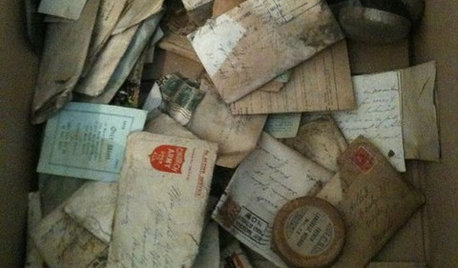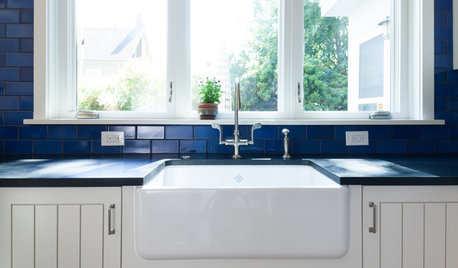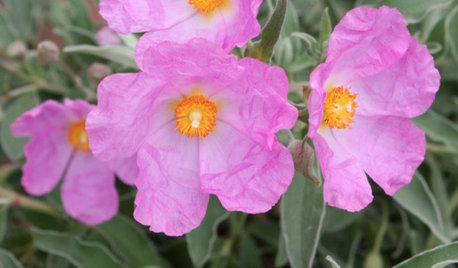Heavy Soil won't drain
scotarob
16 years ago
Related Stories

GARDENING GUIDESGardening Solutions for Heavy Clay Soils
What’s a gardener to do with soil that’s easily compacted and has poor drainage? Find out here
Full Story
GARDENING GUIDESHow to Stop Worrying and Start Loving Clay Soil
Clay has many more benefits than you might imagine
Full Story
GARDENING GUIDESHow to Pick a Mulch — and Why Your Soil Wants It
There's more to topdressing than shredded wood. Learn about mulch types, costs and design considerations here
Full Story
REMODELING GUIDESYou Won't Believe What These Homeowners Found in Their Walls
From the banal to the downright bizarre, these uncovered artifacts may get you wondering what may be hidden in your own home
Full Story
LANDSCAPE DESIGNHow to Shape a Rain Garden and Create the Right Soil for It
Learn how to grade, lay out and amend the soil in your rain garden to support your plants
Full Story
FARM YOUR YARDHow to Get Good Soil for Your Edible Garden
The nutrients in your soil feed the plants that feed you. Here are tips on getting it right — just in time for planting season
Full Story
GARDENING GUIDESHave Acidic Soil in Your Yard? Learn to Love Gardening Anyway
Look to acid-loving plants, like conifers and rhododendrons, to help your low-pH garden thrive
Full Story
GARDENING GUIDESGet the Dirt on Your Garden’s Soil
Understand how your soil supports your plants so you can ensure your garden’s success
Full Story
KITCHEN DESIGNKitchen Sinks: Fireclay Brims With Heavy-Duty Character
Cured at fiery temperatures, fireclay makes for farmhouse sinks that just say no to scratches and dents
Full Story
GARDENING GUIDESGreat Design Plant: Rockrose
Dry summer heat and poor soil won't quell the profuse papery blossoms of rockrose, a low-maintenance champion
Full StoryMore Discussions







michelle_co
gardengal48 (PNW Z8/9)
Related Professionals
Windham Landscape Architects & Landscape Designers · Vernon Hills Landscape Architects & Landscape Designers · Arlington Landscape Contractors · Aberdeen Landscape Contractors · Concord Landscape Contractors · Rockwall Landscape Contractors · Tyngsboro Landscape Contractors · Elkridge Decks, Patios & Outdoor Enclosures · Alvin Decks, Patios & Outdoor Enclosures · Ashland Decks, Patios & Outdoor Enclosures · Green Bay Decks, Patios & Outdoor Enclosures · Miami Decks, Patios & Outdoor Enclosures · Paradise Valley Decks, Patios & Outdoor Enclosures · Pecan Grove Decks, Patios & Outdoor Enclosures · Salisbury Decks, Patios & Outdoor EnclosuresKimmsr
squonnk
gardengal48 (PNW Z8/9)
squonnk
smallaxe
squonnk
reg_pnw7
smallaxe
Kimmsr
scotarobOriginal Author
bpgreen
smallaxe
gardengal48 (PNW Z8/9)
smallaxe
Kimmsr
smallaxe